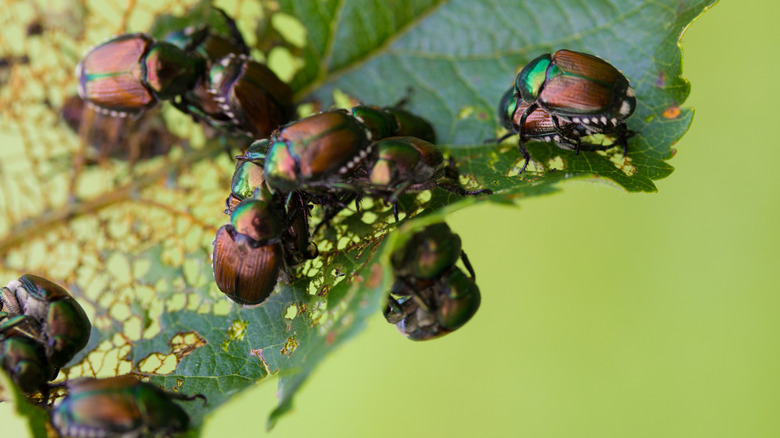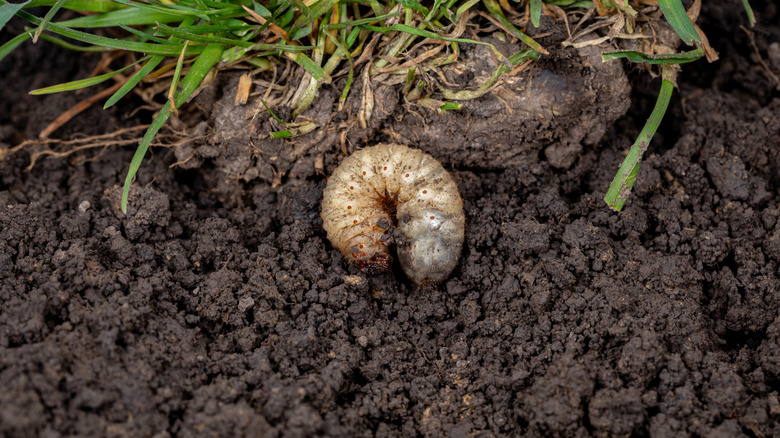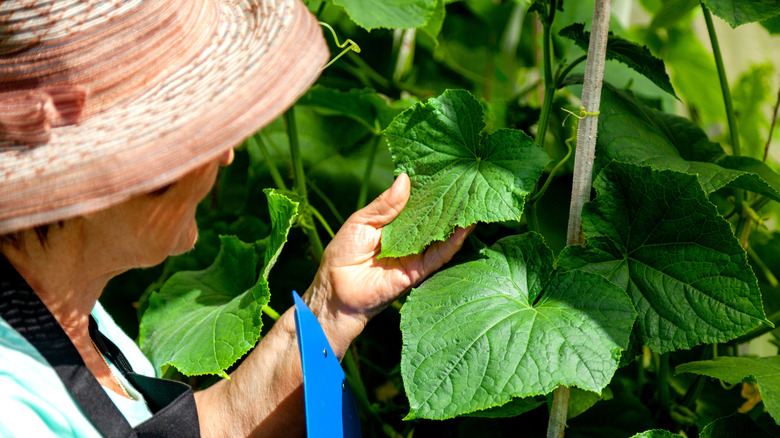Japanese Beetles Are Making A Big Return To Missouri. Here's What To Do About It
The hot summer months in the U.S. can mean sweltering temperatures, unpredictable thunderstorms, and more bug infestations. While it's natural to see more pests during the summertime, though, some parts of the country are seeing unusually high numbers of certain bugs. This is particularly the case in Missouri, which has reported a return of Japanese beetles (Popillia japonica) in 2025. If you live in this region, it's important to be aware of this problem and to take steps now to help prevent some of the damage these invasive beetles can cause.
According to a July 2025 report published by KCTV in Kansas City, Missouri, the region is seeing more Japanese beetles than usual. So far, the beetles have shown up around homes and have even started causing damage to plants on local farms. Like other pests around the country, Japanese beetles are more common during the summer, which is partly due to their life cycles. As the Missouri Department of Conservation notes, Japanese beetles live for about one year, emerging into their adult form in June before dying by August. This is just one reason why Missouri residents are seeing the beetles at this time of the year, but there are also other reasons behind the pests' particularly bigger return to the region this year.
Why Japanese beetle populations are increasing in Missouri, and the risks you need to know
Japanese beetles are considered among the most common pests you'll find living in the Midwest, but their populations can also fluctuate year to year. This can be confusing and unpredictable since the insects are technically annual species in Missouri. A Japanese beetle begins its lifecycle underground as a grub after hatching from one of the 40 to 60 eggs that each female adult lays in the soil the summer before. The grubs pupate in the spring months and then become full-fledged adult beetles in June. While this cycle technically happens every year, some regions, like Missouri, are seeing an influx in the Japanese beetle population thanks to favorable climate conditions. Drier conditions after the eggs have hatched into grubs in late summer can mean fewer of them reaching the adult stage the following year. On the flipside, more rain can increase their numbers. Missouri winters are thought to have no effect on Japanese beetle populations.
Each adult Japanese beetle lives for 30 to 60 days. While this might not seem like a long time, the beetles can wreak havoc on gardens in this short timeframe. During this one- to two-month period, Japanese beetles are also mating and laying new eggs for the next year. The number of adult beetles is higher in 2025 in Missouri, while next year's population will depend on how many eggs successfully hatch, based on weather conditions. If conditions are drier this summer, that could mean fewer beetle problems in 2026.
How to prevent and manage Japanese beetles around your home
While Japanese beetles do not harm humans and pets, these insects can still cause a lot of damage in your yard and garden. Japanese beetles feast on the leaves of at least 300 different types of plants, which can cause significant destruction in a short amount of time. Since their numbers in Missouri are higher this season, it's important to help prevent them from increasing their populations in your yard and garden. You might even consider avoiding these plants to keep your garden free of Japanese beetles. Maintaining healthy plants and trees on your property can help prevent damage caused by Japanese beetles; however, this will not necessarily deter the beetles themselves. It's also essential to refrain from overwatering your lawn. In fact, this one lawn maintenance task can attract pesky Japanese beetles to your yard because these insects thrive in moist conditions. This can also help possibly reduce the chances of grubs surviving into next season.
Japanese beetles are recognizable by their shiny, metallic green bodies, paired with brown wings. If you do happen to see these beetles around your yard or garden, hand-picking them is the best solution. Inspect your plants and remove any beetles by dropping them into a soapy bucket of water. Pesticides are generally considered a last resort if you have a major infestation in your garden, as other pollinators may be impacted. When taking this route, be sure to read product labels carefully to ensure the insecticide can be safely used against Japanese beetles. Be sure to follow all safety recommendations indicated on the label as well.


